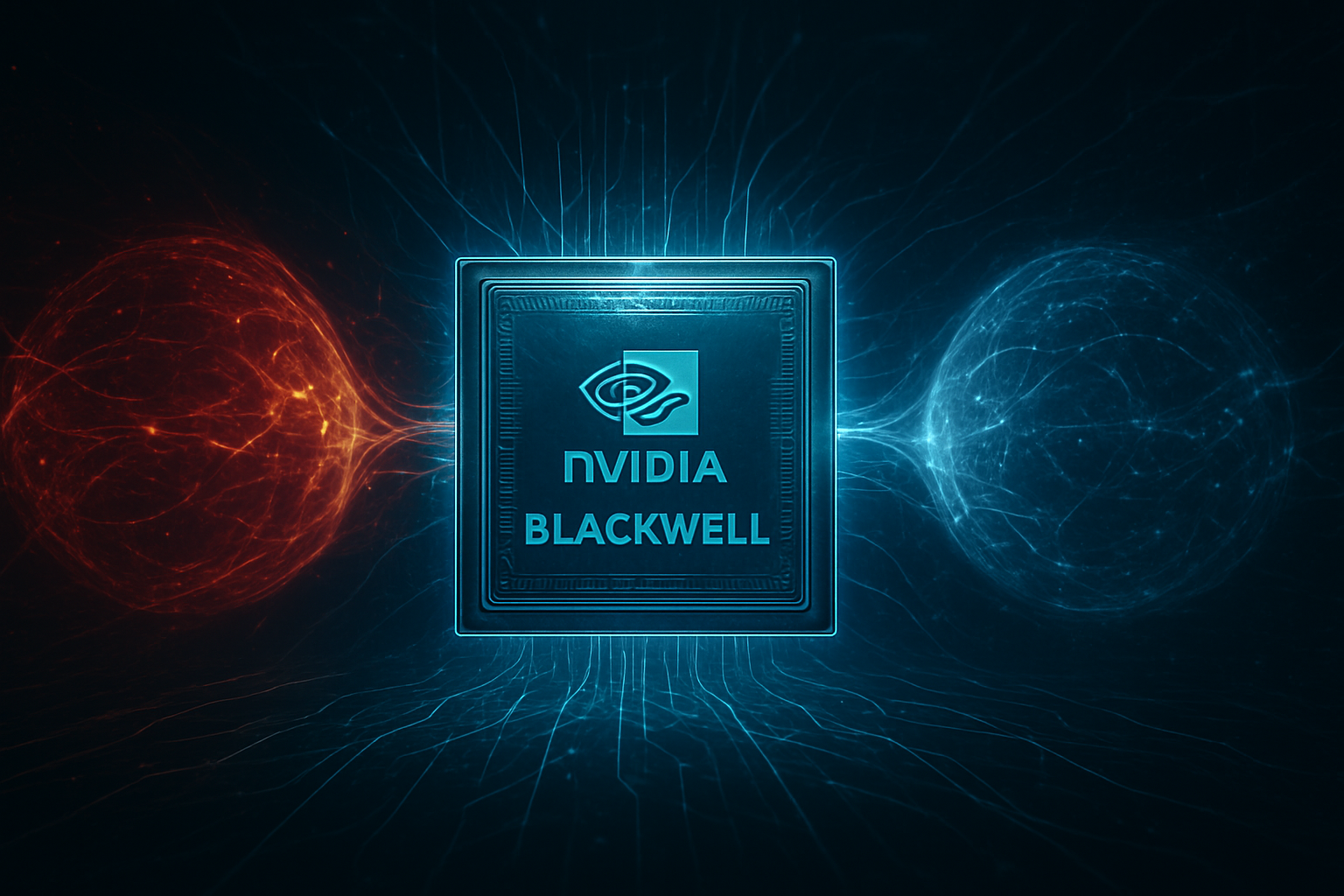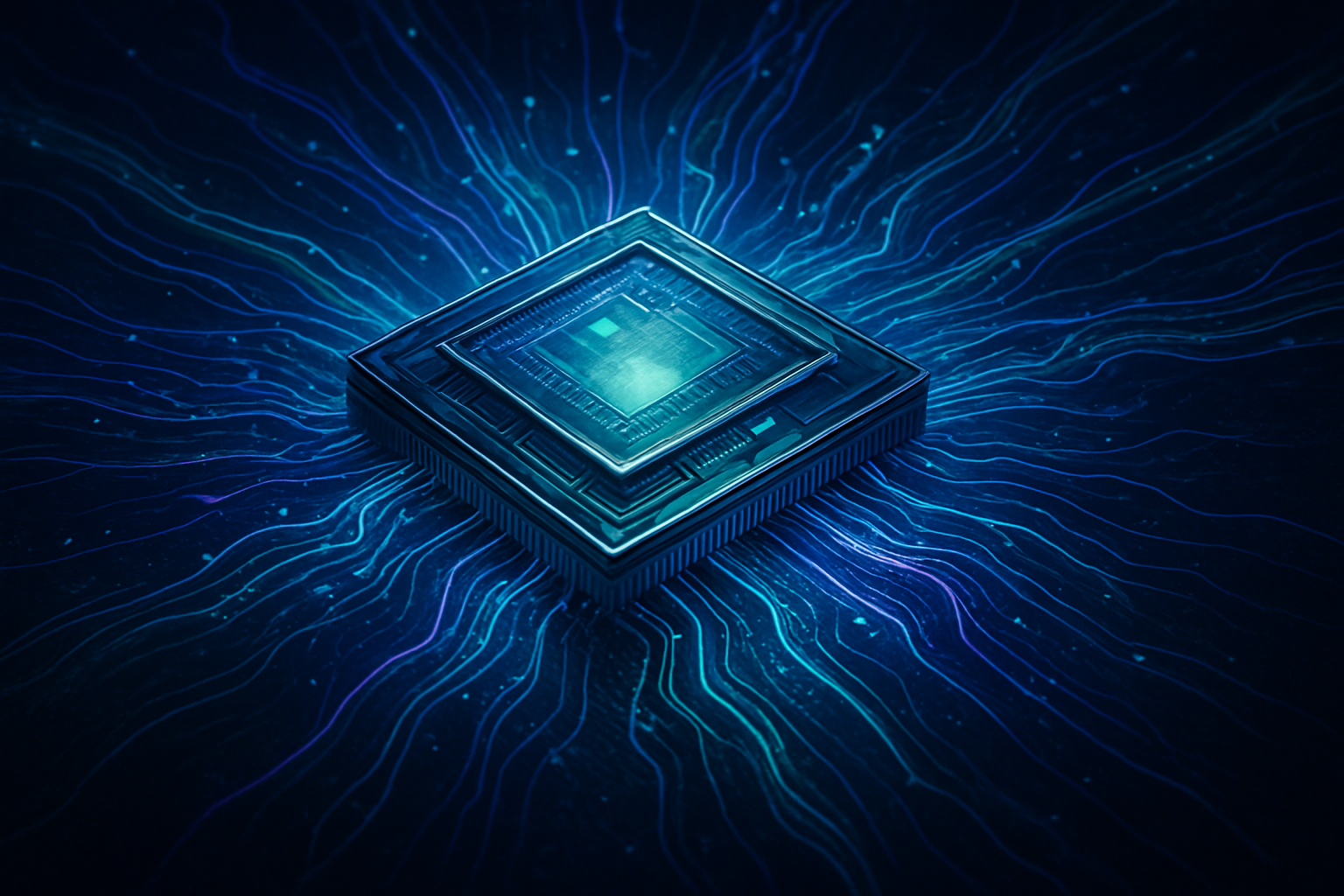Washington D.C., November 4, 2025 – The White House has unequivocally reaffirmed its ban on the export of advanced AI chips, specifically Nvidia's (NASDAQ: NVDA) cutting-edge Blackwell series, to China. This decisive move, announced days before and solidified today, marks a significant escalation in the ongoing technological rivalry between the United States and China, sending ripples across the global artificial intelligence landscape and prompting immediate reactions from industry leaders and geopolitical observers alike. The Biden administration's stance underscores a strategic imperative to safeguard American AI supremacy and national security interests, effectively drawing a clear line in the silicon sands of the burgeoning AI arms race.
This reaffirmation is not merely a continuation but a hardening of existing export controls, signaling Washington's resolve to prioritize long-term strategic advantages over immediate economic gains for American semiconductor companies. The ban is poised to profoundly impact China's ambitious AI development programs, forcing a rapid recalibration towards indigenous solutions and potentially creating a bifurcated global AI ecosystem. As the world grapples with the implications of this technological decoupling, the focus shifts to how both nations will navigate this intensified competition and what it means for the future of artificial intelligence innovation.
The Blackwell Blockade: Technical Prowess Meets Geopolitical Walls
Nvidia's Blackwell architecture represents the pinnacle of current AI chip technology, designed to power the next generation of generative AI and large language models (LLMs) with unprecedented performance. The Blackwell series, including chips like the GB200 Grace Blackwell Superchip, boasts significant advancements over its predecessors, such as the Hopper (H100) architecture. Key technical specifications and capabilities include:
- Massive Scale and Performance: Blackwell chips are engineered for trillion-parameter AI models, offering up to 20 petaFLOPS of FP4 AI performance per GPU. This represents a substantial leap in computational power, crucial for training and deploying increasingly complex AI systems.
- Second-Generation Transformer Engine: The architecture features a refined Transformer Engine that supports new data types like FP6, enhancing performance for LLMs while maintaining accuracy.
- NVLink 5.0: Blackwell introduces a fifth generation of NVLink, providing 1.8 terabytes per second (TB/s) of bidirectional throughput per GPU, allowing for seamless communication between thousands of GPUs in a single cluster. This is vital for distributed AI training at scale.
- Dedicated Decompression Engine: Built-in hardware decompression accelerates data processing, a critical bottleneck in large-scale AI workloads.
- Enhanced Reliability and Diagnostics: Features like a Reliability, Availability, and Serviceability (RAS) engine and advanced diagnostics ensure higher uptime and easier maintenance for massive AI data centers.
The significant difference from previous approaches lies in Blackwell's holistic design for the exascale AI era, where models are too large for single GPUs and require massive, interconnected systems. While previous chips like the H100 were powerful, Blackwell pushes the boundaries of interconnectivity, memory bandwidth, and raw compute specifically tailored for the demands of next-generation AI. Initial reactions from the AI research community and industry experts have highlighted Blackwell as a "game-changer" for AI development, capable of unlocking new frontiers in model complexity and application. However, these same experts also acknowledge the geopolitical reality that such advanced technology inevitably becomes a strategic asset in national competition. The ban ensures that this critical hardware advantage remains exclusively within the US and its allies, aiming to create a significant performance gap that China will struggle to bridge independently.
Shifting Sands: Impact on AI Companies and the Global Tech Ecosystem
The White House's Blackwell ban has immediate and far-reaching implications for AI companies, tech giants, and startups globally. For Nvidia (NASDAQ: NVDA), the direct impact is a significant loss of potential revenue from the lucrative Chinese market, which historically accounted for a substantial portion of its data center sales. While Nvidia CEO Jensen Huang has previously advocated for market access, the company has also been proactive in developing "hobbled" chips like the H20 for China to comply with previous restrictions. However, the definitive ban on Blackwell suggests even these modified versions may not be viable for the most advanced architectures. Despite this, soaring demand from American AI companies and other allied nations is expected to largely offset these losses in the near term, demonstrating the robust global appetite for Nvidia's technology.
Chinese AI companies, including giants like Baidu (NASDAQ: BIDU), Alibaba (NYSE: BABA), and numerous startups, face the most immediate and acute challenges. Without access to state-of-the-art Blackwell chips, they will be forced to rely on older, less powerful hardware, or significantly accelerate their efforts in developing domestic alternatives. This could lead to a "3-5 year lag" in AI performance compared to their US counterparts, impacting their ability to train and deploy advanced generative AI models, which are critical for various applications from cloud services to autonomous driving. This situation also creates an urgent impetus for Chinese semiconductor manufacturers like SMIC (SHA: 688981) and Huawei to rapidly innovate, though closing the technological gap with Nvidia will be an immense undertaking.
Competitively, US AI labs and tech companies like Google (NASDAQ: GOOGL), Microsoft (NASDAQ: MSFT), Meta Platforms (NASDAQ: META), and various well-funded startups stand to benefit significantly. With exclusive access to Blackwell's unparalleled computational power, they can push the boundaries of AI research and development unhindered, accelerating breakthroughs in areas like foundation models, AI agents, and advanced robotics. This provides a strategic advantage in the global AI race, potentially disrupting existing products and services by enabling capabilities that are inaccessible to competitors operating under hardware constraints. The market positioning solidifies the US as the leading innovator in AI hardware and, by extension, advanced AI software development, reinforcing its strategic advantage in the evolving global tech landscape.
Geopolitical Fault Lines: Wider Significance in the AI Landscape
The Blackwell ban is more than just a trade restriction; it is a profound geopolitical statement that significantly reshapes the broader AI landscape and global power dynamics. This move fits squarely into the accelerating trend of technological decoupling between the United States and China, transforming AI into a critical battleground for economic, military, and ideological supremacy. It signifies a "hard turn" in US tech policy, where national security concerns and the maintenance of technological leadership take precedence over the principles of free trade and global economic integration.
The primary impact is the deepening of the "AI arms race." By denying China access to the most advanced chips, the US aims to slow China's progress in developing sophisticated AI applications that could have military implications, such as advanced surveillance, autonomous weapons systems, and enhanced cyber capabilities. This policy is explicitly framed as an "AI defense measure," echoing Cold War-era technology embargoes and highlighting the strategic intent for technological containment. Concerns from US officials are that unrestricted access to Blackwell chips could meaningfully narrow or even erase the US lead in AI compute, a lead deemed essential for maintaining strategic advantage.
However, this strategy also carries potential concerns and unintended consequences. While it aims to hobble China's immediate AI advancements, it simultaneously incentivizes Beijing to redouble its efforts in indigenous chip design and manufacturing. This could lead to the emergence of robust domestic alternatives in hardware, software, and AI training regimes that could make future re-entry for US companies even more challenging. The ban also risks creating a truly bifurcated global AI ecosystem, where different standards, hardware, and software stacks emerge, complicating international collaboration and potentially fragmenting the pace of global AI innovation. This move is a clear comparison to previous AI milestones where access to compute power has been a critical determinant of progress, but now with an explicit geopolitical overlay.
The Road Ahead: Future Developments and Expert Predictions
Looking ahead, the Blackwell ban is expected to trigger several significant near-term and long-term developments in the AI and semiconductor industries. In the near term, Chinese AI companies will likely intensify their focus on optimizing existing, less powerful hardware and investing heavily in domestic chip design. This could lead to a surge in demand for older-generation chips from other manufacturers or a rapid acceleration in the development of custom AI accelerators tailored to specific Chinese applications. We can also anticipate a heightened focus on software-level optimizations and model compression techniques to maximize the utility of available hardware.
In the long term, this ban will undoubtedly accelerate China's ambition to achieve complete self-sufficiency in advanced semiconductor manufacturing. Billions will be poured into research and development, foundry expansion, and talent acquisition within China, aiming to close the technological gap with companies like Nvidia and TSMC (NYSE: TSM). This could lead to the emergence of formidable Chinese competitors in the AI chip space over the next decade. Potential applications and use cases on the horizon for the US and its allies, with exclusive access to Blackwell, include the deployment of truly intelligent AI agents, advancements in scientific discovery through AI-driven simulations, and the development of highly sophisticated autonomous systems across various sectors.
However, significant challenges need to be addressed. For the US, maintaining its technological lead requires sustained investment in R&D, fostering a robust domestic semiconductor ecosystem, and attracting top global talent. For China, the challenge is immense: overcoming fundamental physics and engineering hurdles, scaling manufacturing capabilities, and building a comprehensive software ecosystem around new hardware. Experts predict that while China will face considerable headwinds, its determination to achieve technological independence should not be underestimated. The next few years will likely see a fierce race in semiconductor innovation, with both nations striving for breakthroughs that could redefine the global technological balance.
A New Era of AI Geopolitics: A Comprehensive Wrap-Up
The White House's unwavering stance on banning Nvidia Blackwell chip sales to China marks a watershed moment in the history of artificial intelligence and global geopolitics. The key takeaway is clear: advanced AI hardware is now firmly entrenched as a strategic asset, subject to national security interests and geopolitical competition. This decision solidifies a bifurcated technological future, where access to cutting-edge compute power will increasingly define national capabilities in AI.
This development's significance in AI history cannot be overstated. It moves beyond traditional economic competition into a realm of strategic technological containment, fundamentally altering how AI innovation will unfold globally. For the United States, it aims to preserve its leadership in the most transformative technology of our era. For China, it presents an unprecedented challenge and a powerful impetus to accelerate its indigenous innovation efforts, potentially reshaping its domestic tech industry for decades to come.
Final thoughts on the long-term impact suggest a more fragmented global AI landscape, potentially leading to divergent technological paths and standards. While this might slow down certain aspects of global AI collaboration, it will undoubtedly spur innovation within each bloc as nations strive for self-sufficiency and competitive advantage. What to watch for in the coming weeks and months includes China's official responses and policy adjustments, the pace of its domestic chip development, and how Nvidia and other US tech companies adapt their strategies to this new geopolitical reality. The AI war has indeed entered a new and irreversible phase, with the battle lines drawn in silicon.
This content is intended for informational purposes only and represents analysis of current AI developments.
TokenRing AI delivers enterprise-grade solutions for multi-agent AI workflow orchestration, AI-powered development tools, and seamless remote collaboration platforms.
For more information, visit https://www.tokenring.ai/.









